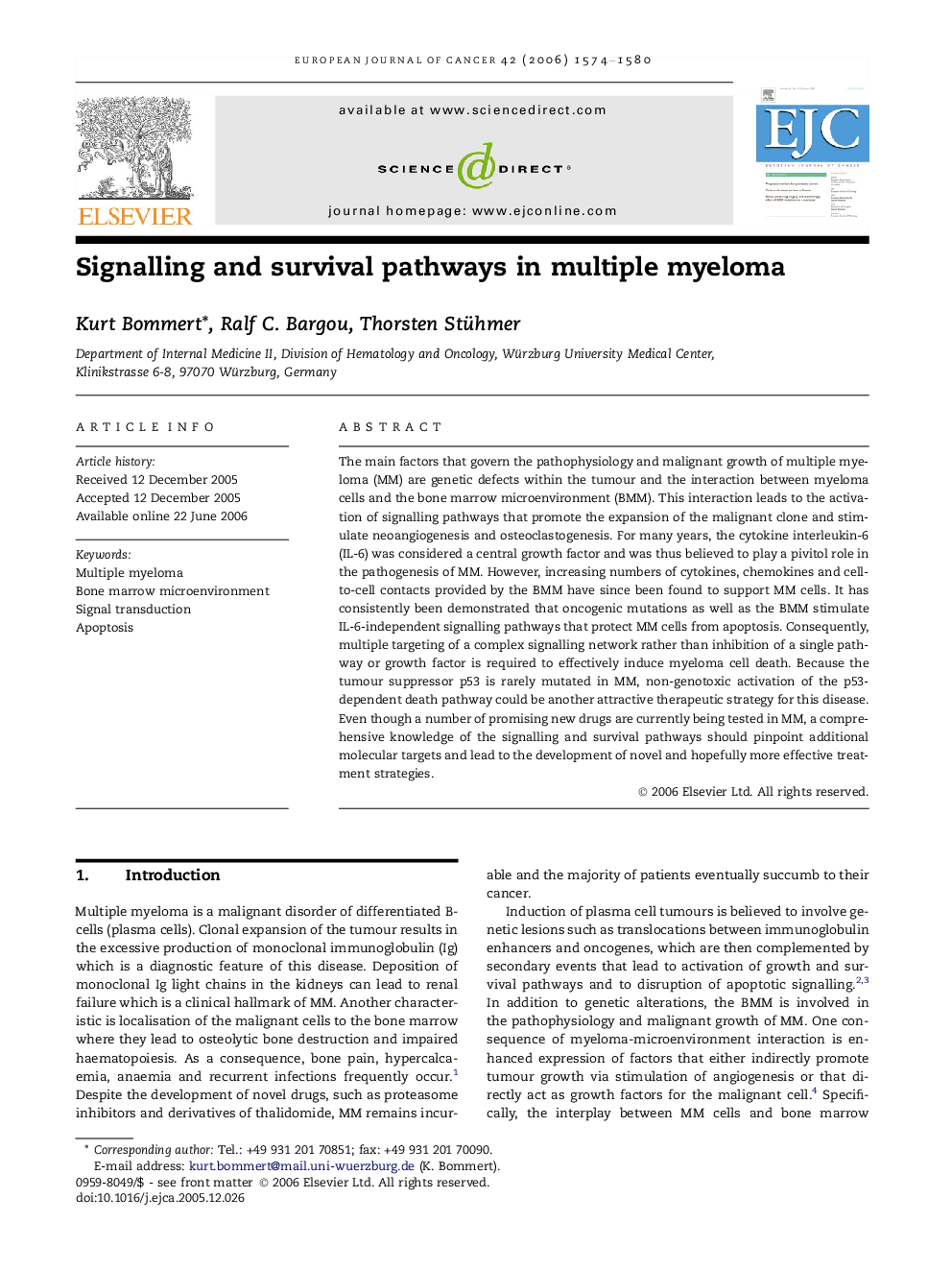| کد مقاله | کد نشریه | سال انتشار | مقاله انگلیسی | نسخه تمام متن |
|---|---|---|---|---|
| 2126312 | 1547282 | 2006 | 7 صفحه PDF | دانلود رایگان |

The main factors that govern the pathophysiology and malignant growth of multiple myeloma (MM) are genetic defects within the tumour and the interaction between myeloma cells and the bone marrow microenvironment (BMM). This interaction leads to the activation of signalling pathways that promote the expansion of the malignant clone and stimulate neoangiogenesis and osteoclastogenesis. For many years, the cytokine interleukin-6 (IL-6) was considered a central growth factor and was thus believed to play a pivitol role in the pathogenesis of MM. However, increasing numbers of cytokines, chemokines and cell-to-cell contacts provided by the BMM have since been found to support MM cells. It has consistently been demonstrated that oncogenic mutations as well as the BMM stimulate IL-6-independent signalling pathways that protect MM cells from apoptosis. Consequently, multiple targeting of a complex signalling network rather than inhibition of a single pathway or growth factor is required to effectively induce myeloma cell death. Because the tumour suppressor p53 is rarely mutated in MM, non-genotoxic activation of the p53-dependent death pathway could be another attractive therapeutic strategy for this disease. Even though a number of promising new drugs are currently being tested in MM, a comprehensive knowledge of the signalling and survival pathways should pinpoint additional molecular targets and lead to the development of novel and hopefully more effective treatment strategies.
Journal: European Journal of Cancer - Volume 42, Issue 11, July 2006, Pages 1574–1580